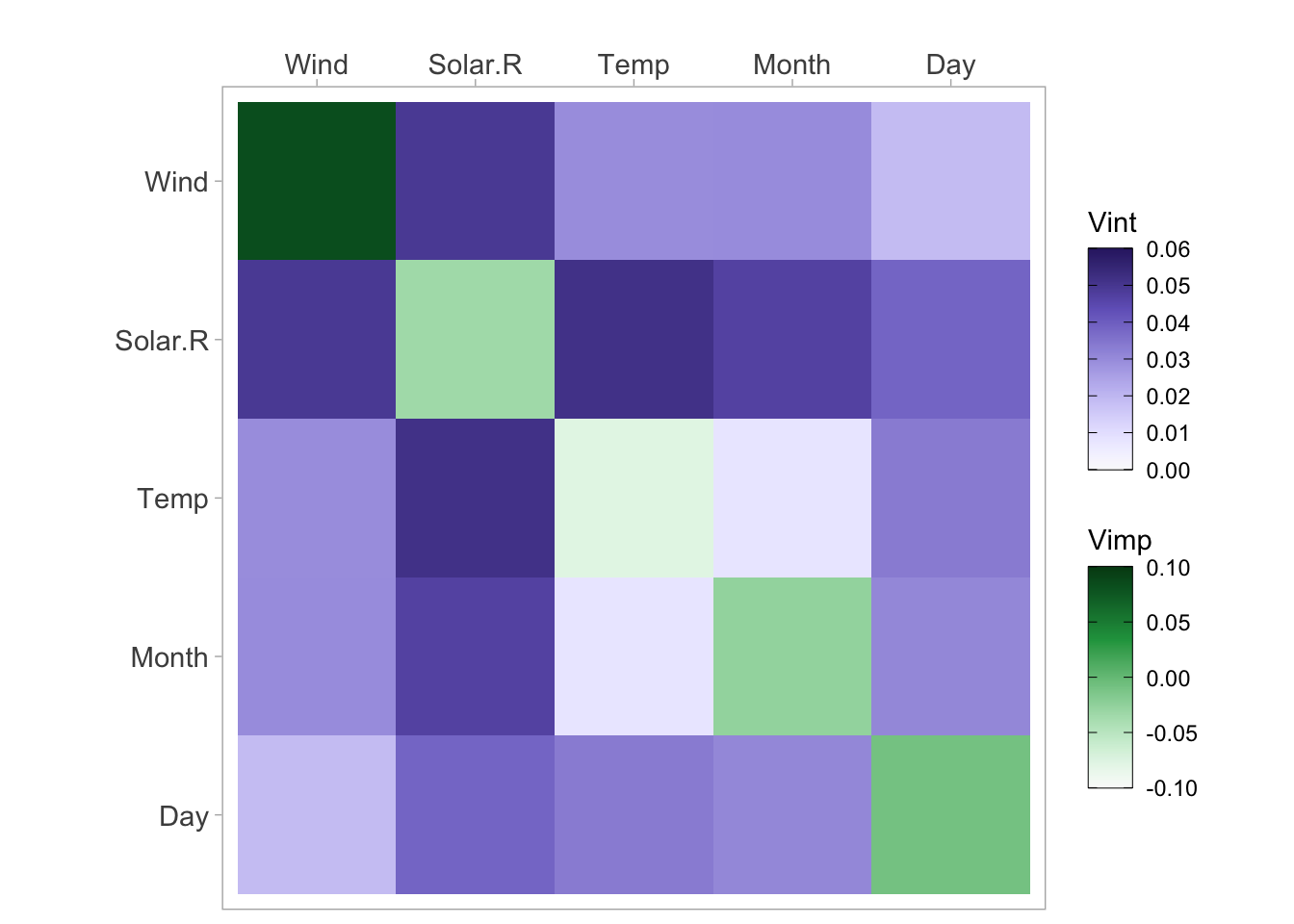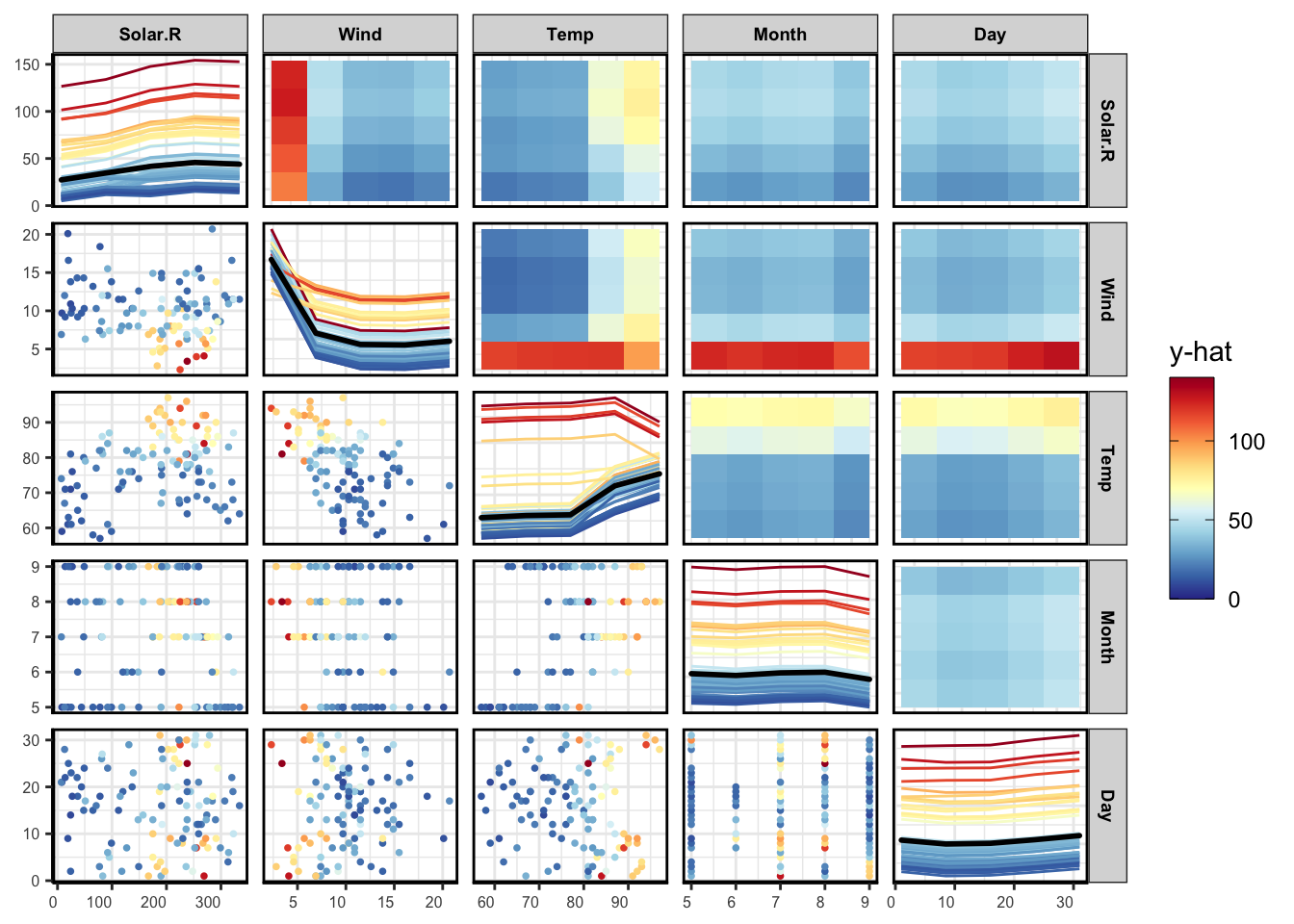keras - Neural Network
kerasVivid.RmdThis guide is designed as a quick-stop reference of how to use some
of the more popular machine learning R packages with vivid.
In the following example, we use the air quality data for
regression.
keras - Neural Network
The keras package in R is an interface to the original
keras Python library. It allows R users to build and train
neural network models using the high-level Keras API. To use
keras the data must first be normalised. Due to the
complexity custom model fits in keras, producing a custom
predict function to use with vivid may require some work.
In the example below, we show how to use vivid when
building a keras model composed of a linear stack of layers
(i.e., using keras_model_sequential). Additionally,
currently the PDP plots in vivid only work for the
development version on GitHub.
# load data
aq <- na.omit(airquality)
# Set up data
train_data <- aq %>%
as.matrix()
train_targets <- aq$Ozone
# Normalize the data
mean <- apply(train_data, 2, mean)
std <- apply(train_data, 2, sd)
aqTrain <- scale(train_data, center = mean, scale = std)
# Define model architecture
build_model <- function() {
model <- keras_model_sequential() %>%
layer_dense(units = 64, activation = "relu",
input_shape = dim(aqTrain)[[2]]) %>%
layer_dense(units = 64, activation = "relu") %>%
layer_dense(units = 1)
model %>% compile(
optimizer = "rmsprop",
loss = "mse",
metrics = c("mae")
)
}
# Train the final model
model <- build_model()
model %>% fit(train_data, train_targets, epochs = 80,
batch_size = 16, verbose = 0)
# Create usable data frame from scaled data
aqFinal <- as.data.frame(aqTrain)
# predict function for keras
vi_fun <- function(fit, data,...) {
predict(fit, x = as.matrix(data))
}
# vivid
vi <- vivi(data = aqFinal,
fit = model,
response = 'Ozone',
predictFun = vi_fun)Heatmap
viviHeatmap(mat = vi)
PDP
pdpPairs(data = aqFinal,
fit = model,
response = "Ozone",
nmax = 500,
gridSize = 10,
nIce = 100,
predictFun = vi_fun)